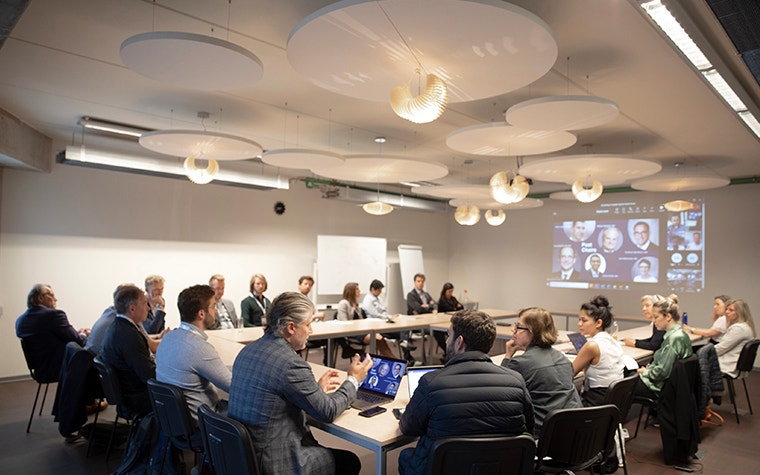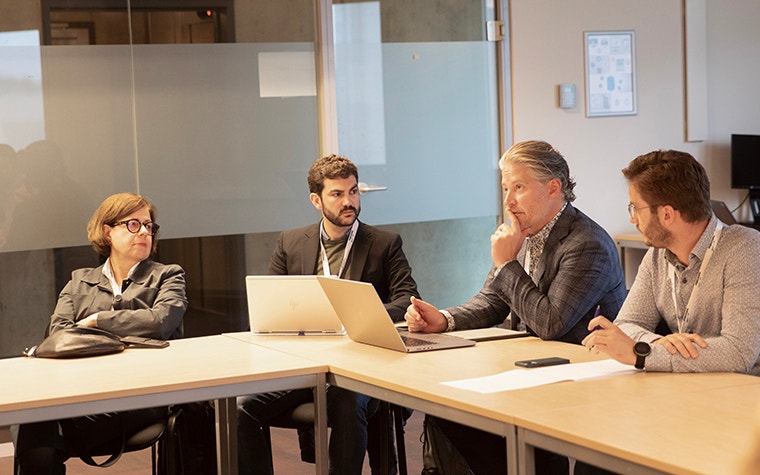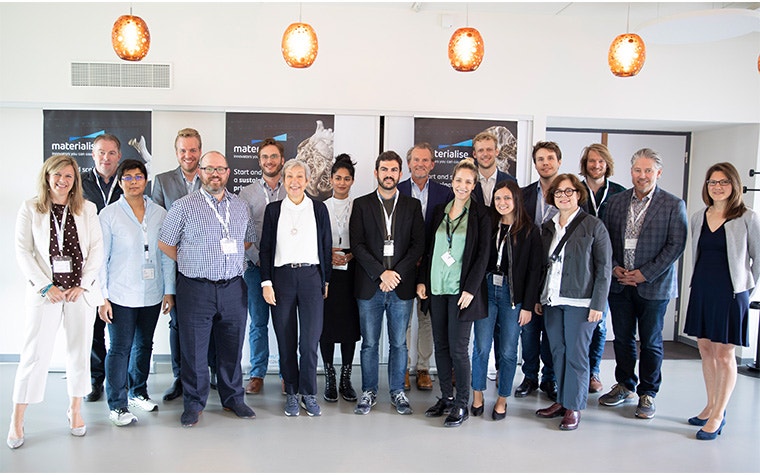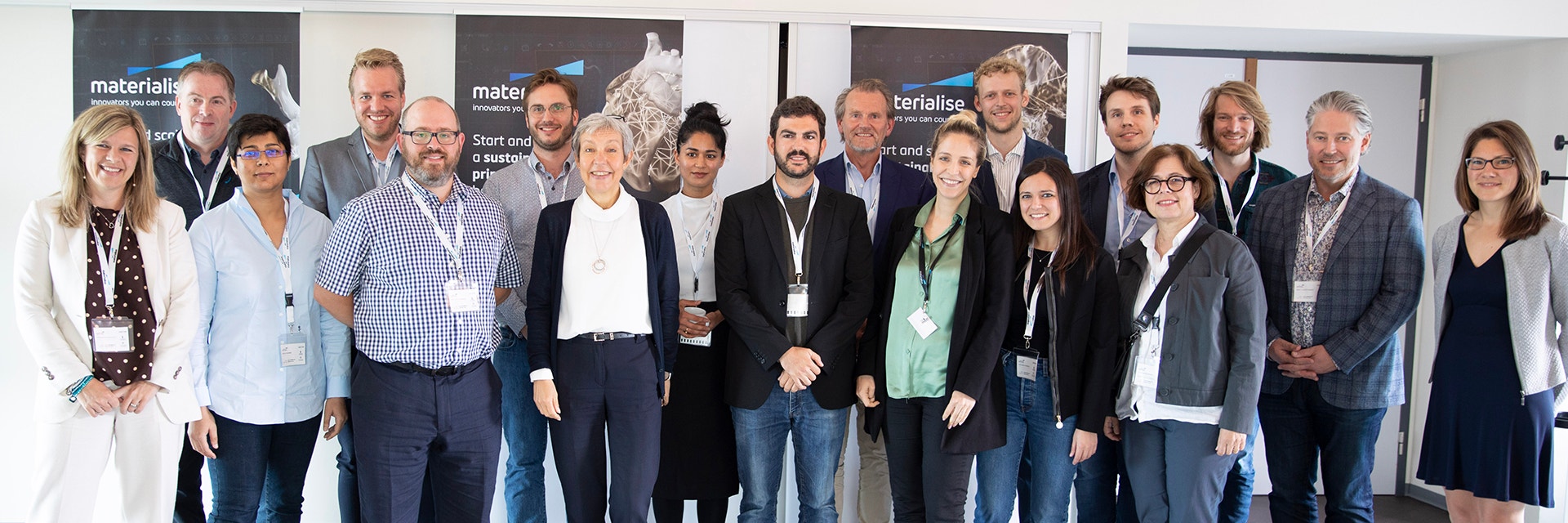EXPERT INSIGHT
The Formation of a European 3D Printing in Hospitals Special Interest Group

During the most recent Materialise 3D Printing in Hospitals Forum, attendees from 15 hospitals, including Aarhus Universitetshospital, UZ Gent, Allgemeines Krankenhaus der Stadt Wien — Medizinischer Universitätscampus, Universitätsspital Basel, UMC Utrecht, and others around Europe took the opportunity of gathering all in one place. They sat down together to create the first European 3D printing in hospitals special interest group (SIG). Their hope is that this SIG group will be able to move forward the adoption of 3D printing in hospitals and tackle some large issues together in order to standardize the care offered.
A dynamic combination of healthcare experts, from junior to senior, from countries in Europe and beyond, and from different clinical specialties, really set the groundwork for the inspiring conversation. With Andy Christensen, Chair of the RSNA 3D Printing SIG, in attendance, they exchanged ideas based on what had been done in the US. The group came to a consensus on a particular set of steps to build the group. Here are the action points they agreed on:
Evidence collection to achieve reimbursement
The group collectively agreed that there was a clear need to include different healthcare and 3D printing (3DP) lab settings and diverse action points across different countries. For example, what would be reimbursed in one country might not work in others. They realized that they would need more data to get a complete understanding of what is required and to be able to advocate for the group's interests. This collection of different levels of evidence had to be accessible to all in the group. Multicenter and multinational clinical trials, as well as meta-analysis studies, would be required to gather data.
Compliance and quality guidelines
In order to be able to push for specific regulations, the SIG decided they needed to come to a consensus on quality guidelines. This meant creating ways to document and guide the community to work in similar methods that could be easily analyzed across borders. Using strict guidelines is similar to how the Medical Devices Regulation (MDR) is strengthening the case for 3D printing and planning in hospitals. With procedures in place, the group would have a way of efficiently disseminating information so that they can learn from each other. This point was frequently brought up throughout the discussion.


Education
The group quickly realized that everyone came with different experiences and that there should be a standardized set of knowledge regarding their sector. They would need to sit down together and map out different focuses. This would allow them to set up an academy to fill the group's knowledge gaps. This education can also increase awareness in disciplines where 3D printing isn't as well known.


Next steps for the future of the SIG
Before closing, they decided on a core group of leaders and advisors to drive the strategy in the coming year. This meeting ended up being a significant step towards unifying the voices of all European professionals working in 3D printing in hospitals to increase awareness of the possibilities and strengthen the community. We are confident that this special interest group will have a crucial role in shaping the future of 3D printing in hospitals in Europe and look forward to seeing the next steps implemented. The group's first official meeting will take place in Vienna, Austria, on December 2-3, 2022, during the Additive Manufacturing in Medicine 4th Symposium with presentations and a round table discussion about the strategic topics of interest.
Core group of SIG leaders
- Dr. Giovanni Biglino — Bristol Medical School
- Carina Hopfner — University Hospital Munich (LMU)
- Joakim Lundtoft Lindhardt — Aarhus Universitetshospital
- Francesco Moscato, Ph.D. — Allgemeines Krankenhaus der Stadt Wien - Medizinischer Universitätscampus
- Dr. Gunpreet Oberoi — Allgemeines Krankenhaus der Stadt Wien - Medizinischer Universitätscampus
- Arnau Valls Esteve — Sant Joan de Déu Barcelona Children’s Hospital
- Dr. Alessandro Tel — University Hospital of Udine
Advisors
- Dr. Florian Thieringer — Universitätsspital Basel
- Andy Christensen — Chair of the RSNA 3D Printing SIG
- Beatriz Dominguez Gonzalez, Ph.D. — Global Market Manager for 3D Printing at the Point of Care at Materialise
Participants
- Dr. Neha Sharma — Universitätsspital Basel
- Dr. Greg Skinner — East Midlands Congenital Heart Center
- Dr. Veronica Bordonaro — Bambino Gesù Pediatric Hospital
- Dr. Lena Gordon Murkes – Karolinska University Hospital
- Peter Metherall, Ph.D. — Sheffield Teaching Hospitals
- Joëll Magré — UMC Utrecht
- Dr Renaat Coopman — Ghent University Hospital
- Dr. Robert Bentley — King’s College Hospital
- Bart Cornelissen — Erasmus MC
- Dr. Ferran Fillat — Parc Taulí University Hospital / Hospital Clinic of Barcelona (online)
- Mireia Gamundi López — Parc Taulí Univerty Hospital (online)


L-103050-01
Share on:
You might also like
Never miss a story like this. Get curated content delivered straight to your inbox.
